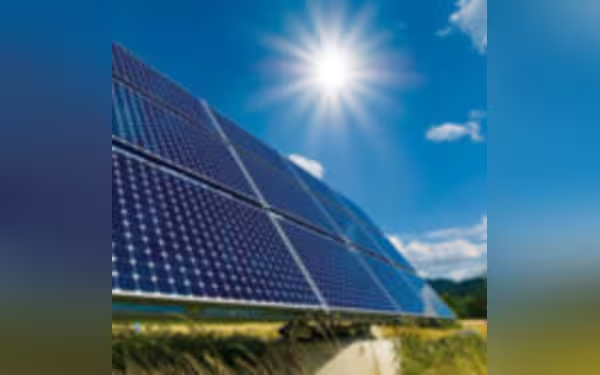Saturday, November 16, 2024 09:51 PM
World Bank Report: Off-Grid Solar Can Electrify 400 Million by 2030
- Off-grid solar could power 400 million people by 2030.
- Investment needs to increase sixfold to $21 billion.
- Only 22% of households can afford basic solar kits.
 Image Credits: pakistantoday
Image Credits: pakistantodayWorld Bank highlights off-grid solar's potential to electrify 400 million people by 2030, requiring significant investment for success.
The World Bank has recently released a significant report highlighting the potential of off-grid solar energy to transform the lives of millions around the globe. With approximately 400 million people still lacking access to electricity, the report emphasizes that off-grid solar solutions could be the most cost-effective way to provide energy to 41% of these individuals by the year 2030. This is particularly crucial in regions like sub-Saharan Africa, where over 80% of the unelectrified population resides.
According to the "Off-Grid Solar Market Trends Report (MTR) 2024," the off-grid solar sector has already made remarkable strides, accounting for 55% of new energy connections in sub-Saharan Africa between 2020 and 2022. However, to fully realize the potential of off-grid solar, a substantial increase in investment is necessary. The report warns that a sixfold increase, amounting to $21 billion, is required to ensure that off-grid solar can contribute effectively to universal energy access. Without this investment, the opportunity to electrify millions will be lost, leaving an estimated 660 million people without electricity by 2030.
During the recent Global Off-Grid Solar Forum and Expo held in Nairobi, the report was presented to over 1,500 attendees, including policymakers, investors, and representatives from various companies in the renewable energy sector. Qimiao Fan, the World Bank’s Country Director for Kenya, Rwanda, Somalia, and Uganda, stressed the importance of providing affordable and clean electricity as a means to lift people out of poverty. He stated, "We must rewrite this story," highlighting the urgency of the situation.
The report also outlines the resilience of the off-grid solar industry, which has continued to thrive despite challenging economic conditions. In 2022 and 2023, more than 50 million off-grid solar products were sold, generating a market turnover of $3.9 billion and $3.8 billion, respectively. However, the report reveals that only 22% of households without electricity can afford the monthly payments for basic solar energy kits. This affordability issue is exacerbated in conflict-affected areas, where prices for pay-as-you-go (PAYG) systems are significantly higher.
Investment in the off-grid solar sector reached $1.2 billion during the 2022-2023 period, primarily driven by debt financing. Yet, the report emphasizes that a sixfold increase in public funding is essential to electrify the 398 million people who could be most efficiently connected through off-grid solar solutions. Additionally, a further $74 billion is needed to address markets for solar water pumps, cold storage solutions, and advanced solar options for small and medium-sized enterprises.
Initiatives like the World Bank's "Mission 300," which aims to connect 300 million people to electricity across Africa, underscore the growing recognition of off-grid solar in international energy agendas. The collaboration between companies, investors, governments, and development partners is crucial to unlocking the full potential of off-grid solar. By working together, they can help achieve Sustainable Development Goal 7, which aims to ensure access to affordable, reliable, sustainable, and modern energy for all.
The findings of the World Bank's report serve as a wake-up call for stakeholders in the energy sector. The potential of off-grid solar to change lives is immense, but it requires immediate action and investment. By prioritizing off-grid solar solutions, we can not only provide electricity to millions but also foster economic growth, improve education, and enhance healthcare services in underserved communities. The time to act is now, and the future of energy access depends on our collective commitment to making it happen.













